Review: 2010 Buick LaCrosse CXS HiPer Strut
Even more than the Cadillac SRX reviewed last week, the 2010 Buick LaCrosse reflects Bob Lutz’s influence at GM. Soon after assuming responsibility for the corporation’s new product development in 2001, Lutz deemed the styling of the original Buick LaCrosse, recently approved for production, unfit for sale. The car was sent back to the designers for late revisions to the front end, delaying its launch by over a year. But not much could be done so late in the process. What would the LaCrosse be like if Lutz could oversee its entire development? With redesigned and re-engineered 2010 Buick LaCrosse we now have an answer.
I previously reviewed the Buick LaCrosse in CXL AWD form. This time around I spent a week with a LaCrosse CXS that differed from the earlier car in two notable ways: a more powerful 3.6-liter V6 (instead of a 3.0) and GM’s new “HiPer Strut” front suspension (a midyear change).
Lutz’s most notable act at GM was to return a high degree of autonomy to the designers, freeing them from the constraints imposed by engineering and manufacturing, the short-sighted meddling of marketing, and the time and budget restraints of product line executives. So the new Buick LaCrosse should look great, and for the most part it does. The designers did very well with the tall, cab forward body structure they were given—even with Lutz they clearly didn’t have an entirely clean sheet of paper to work from. While the front fender line would ideally be a little lower, as executed the curvaceous exterior has presence, catches your eye, and is clearly a Buick from stem to stern. This ain’t no rebadge. The LaCrosse looks special.
The artful curves continue inside the car. The door-mounted armrests and the smooth transition from the door panels to the instrument panel are especially nicely done. Real stitching molded into these panels, sufficiently convincing faux wood, and extensive ambient lighting contribute to an
upscale ambiance. Lutz’s push for richer materials has had mixed results. Unlike in some recent Cadillacs, even the lower door panels are padded. But the center console and the switchgear still don’t look or feel quite as nice as those in the Audis Lutz upheld as benchmarks or the Lexus Buick hopes to steal buyers from. It might have Acura beat, though.
Unfortunately, giving designers so much power also has downsides. The thick chrome band around the center stack sometimes reflects bright sunlight directly into the driver’s eyes. The prominent console and curves that look so good detract from perceived roominess—it remains to be seen whether GM can offer an Epsilon-based sedan that feels roomy. The fashionably high beltline and ultra-wide pillars (why?) severely constrict the driver’s sight lines, especially in turns. They also bury preteens in the basement-like back seat. The artful curve of the center stack into the center console looks sharp, but it positions the shifter too far rearward. Driving the LaCrosse with one’s hand on the shifter requires a rightward twist. Design might not have driven the number of buttons, but there are too many that look too much alike.
As in pretty much every GM car in recent memory, the front seats could be better. They provide a fair amount of lateral support, but only after considerable fiddling with the power adjustments, which include four-way lumbar, did I find a setting that was passably comfortable. Even then the
ultra-firm head restraint juts too far forward. Other manufacturers manage to combine much less intrusive headrests with good safety scores. This isn’t a good place to opt for the lowest-cost solution. The rear seat, a bit low to the floor in the traditional GM manner, offers plenty of room for legs, but not so much for shoulders. The trunk would be narrow regardless, but fully encapsulating the conventional hinges further constricts it.
Disregard the mere ten-percent difference in the peak horsepower. The Buick LaCrosse CXS’s 280-horsepower 3.6-liter V6 spins the front wheels all too easily. It feels far stronger and sounds much better than the CXL’s 252-horsepower 3.0-liter V6. The difference in torque is more substantial, 259 vs. 217 pound-feet, and the LaCrosse’s two-ton curb weight is a poor match for the relatively torque-free 3.0. Yet for 2010 all-wheel-drive, which adds another 170 pounds, was only available with the 3.0. With the 2011 car this mistake will be rectified—the 3.0 will be exiled and only the 3.6 will be offered with all-wheel-drive. Better late than never, but how did the 3.0 ever make it out of the gate during Lutz’s watch? Did the car blow through its curb weight targets, and yet no one reconsidered the powertrain plan? Lutz has acknowledged that curb weight became a low priority during his quest to improve the cars, and that his successors must now work hard to take the pounds off. Even so, why not offer all-wheel-drive with the 3.6 from the start? EPA fuel economy ratings? Perhaps, but in general the 3.6 has earned equal or better EPA ratings than the 3.0.
Putting 259 pound-feet of torque through the front wheels is a recipe for torque steer. And, with the MacPherson strut front suspension fitted at intro, it was more than just hypothetical. The tested car was fitted with GM’s oddly named HiPer Strut front suspension, a midyear change. With this suspension design, the upper steering pivot moves from the strut mount to a ball joint located outboard of the strut. This yields a more vertical “kingpin” axis about which the wheel and tire revolve as the steering wheel is turned, a reduced offset between this axis and the tire’s contact patch, and a reduced scrub radius (the distance between where this axis hits the road and the tire’s contact patch). In theory, this should reduce torque steer, improve grip in turns, and improve steering precision but also increase steering effort at low speeds and reduce steering feel.
To study the real-world differences, I dropped by a dealer to test drive a LaCrosse CXS with the old suspension. Steering effort at low speeds isn’t notably affected—no doubt the level of assist has been tweaked to compensate. There’s not much steering feel with HiPer Strut, but there also isn’t much with the old suspension. In either case there’s a slight amount of slop, and you only learn of tire slip from your ears.. Torque steer is all but eliminated, though the nose does continue to feel like it wants to wander this way and that under hard acceleration. This is probably a matter of weight distribution and suspension tuning rather than suspension geometry. Even in CXS trim the LaCrosse’s suspension is relatively soft, so
under hard acceleration the car squats and weight transfers off the nose. HiPer Strut does keep the tire’s contact patch more parallel to the road surface as it moves up and down over bumps and in turns. With it the car feels more planted and stable.
Alas, planted and stable are not the same as fun and sporty. I also dropped by dealers to compare the Nissan Maxima and Acura TL. Each has unfortunate exterior styling, and the Nissan’s interior looks and feels much cheaper than the others. But either car provides a much more engaging and entertaining driving experience, the Nissan’s abundant torque steer notwithstanding (the TL avoided the same via SH-AWD). Credit driving positions that provide a clearer view over the hood (sportily bumped up over the wheels in the Nissan’s case) and that seem to place the driver closer to the action. Also credit powertrains and steering systems that react much more quickly and sharply to driver inputs and tauter suspensions. In terms of cornering speeds the HiPer Strut Buick compares well, but the Nissan and Acura feel sportier and are simply much more fun to drive. Buick doesn’t do “visceral.” For mainstream drivers this could well be a plus. But not for driving enthusiasts.
The LaCrosse does gain back some points for ride quality, as it soaks up bumps much better than either the TL or the Maxima. Still there’s some tire clomping (but there’s more of both it and other noise in the other cars) and some fore-aft pitching (generally absent from the other cars, which react to the same bumps with a sharper but quicker and more vertical jolt). The impact of the
pitching is magnified by two factors. The Buick’s head-up display is very helpful when manually shifting the six-speed automatic, as it displays not only the vehicle speed but also the engine speed and the current gear. (Bonus: song titles when they change.) But when the car pitches over bumps, the HUD dances up and down, and you’re tracking the bouncing ball. Worse, if you’re built like me then each time the car pitches over a frost heave that overly firm, overly far forward head restraint smacks you in the back of the head. On roads with lumpy surfaces this gets old quickly.
The LaCrosse with the MacPherson strut suspension was also fitted with the optional Touring Package, which includes more attractive, one-inch larger wheels (19s instead of 18s) and auto-adjusting shocks. Theoretically, these shocks should improve both handling and ride quality. Perhaps the lower profile treads were to blame, but while the Touring Package improves the appearance of the car it yields a busier, harsher ride and provides no evident handling benefit to compensate.
The conclusion with the new Buick LaCrosse is much the same as it was for the new Cadillac SRX. In both cases we have attractive styling, a richer interior ambiance, and improved refinement coupled to too many pounds, poor visibility, and an insufficiently visceral driving experience. Design has clearly benefited from Lutz’s influence, but by giving it more power relative to other groups, not by enabling and encouraging all functions to work better together towards the shared goal of an all-around better car. HiPer strut does improve the Buick LaCrosse’s handling, but doesn’t transform the character of the car. For the potential of this innovative suspension to be realized, it must be paired with quicker, sharper steering and a more agile chassis. Lutz has often been heralded as the ultimate car guy, but like the car guys from GM’s glory years seems to have focused more on how cars look than on what they’re like to sit in and drive. Now that GM has fixed the styling, perhaps they can provide more attention to the driving experience.
GM provided the press-fleet vehicle, insurance and one tank of gas for this review.
Michael Karesh owns and operates TrueDelta, an online source of vehicle pricing and reliability data.
Michael Karesh lives in West Bloomfield, Michigan, with his wife and three children. In 2003 he received a Ph.D. from the University of Chicago. While in Chicago he worked at the National Opinion Research Center, a leader in the field of survey research. For his doctoral thesis, he spent a year-and-a-half inside an automaker studying how and how well it understood consumers when developing new products. While pursuing the degree he taught consumer behavior and product development at Oakland University. Since 1999, he has contributed auto reviews to Epinions, where he is currently one of two people in charge of the autos section. Since earning the degree he has continued to care for his children (school, gymnastics, tae-kwan-do...) and write reviews for Epinions and, more recently, The Truth About Cars while developing TrueDelta, a vehicle reliability and price comparison site.
More by Michael Karesh
Latest Car Reviews
Read moreLatest Product Reviews
Read moreRecent Comments
- Fahrvergnugen The only GP we watch - and attend - is SailGP. Feeds a slightly different bunch of adrenaline junkies, though there must be some overlap.
- SCE to AUX Fisker filed for reorganization in Austria - the end is near.https://insideevs.com/news/718875/fisker-reorganization-austria/
- Bd2 I'll watch F1 when Kia and/or Hyundai pony (pun intended) up the cash to field a class leading team. Hyundai is leading many series with the Elantra N with it's incredible 350HP Smartstream-N engine.
- MaintenanceCosts More or less an admission that the radar-only cars will never do anything that could reasonably be marketed as "Full Self-Driving."
- Bd2 The coolest true SUV on the market. Change my mind.



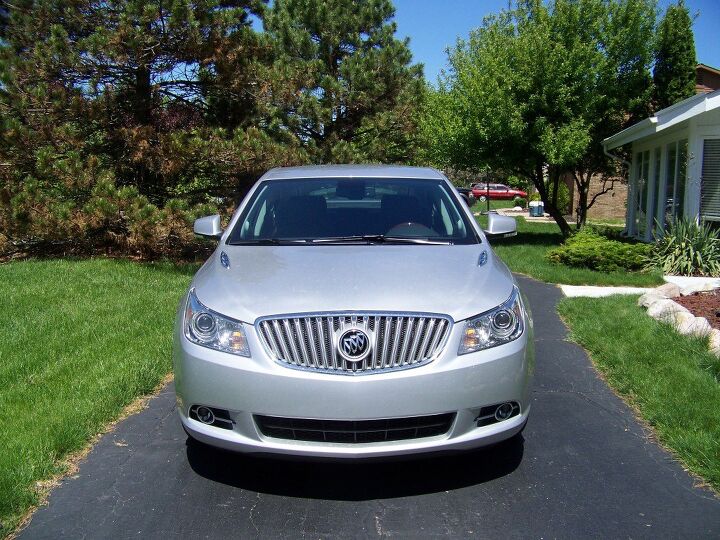



















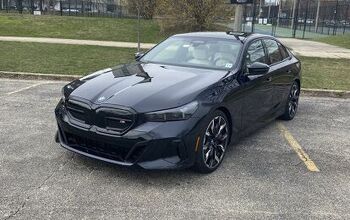
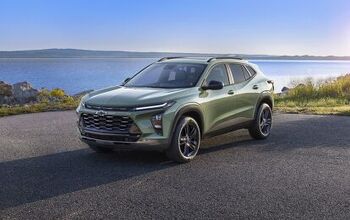

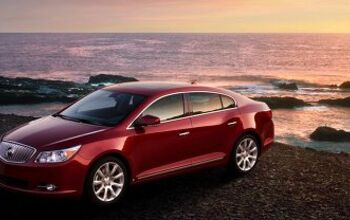
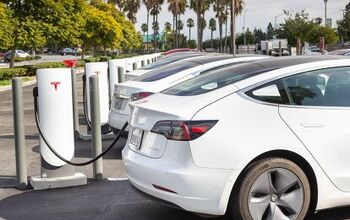
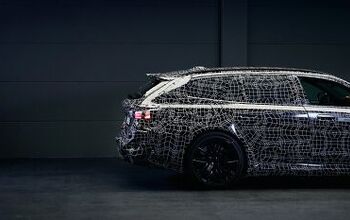
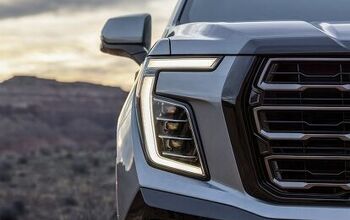
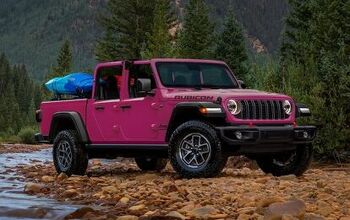
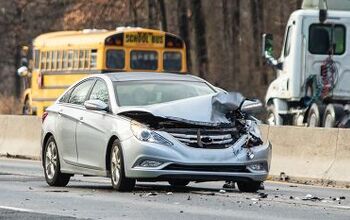
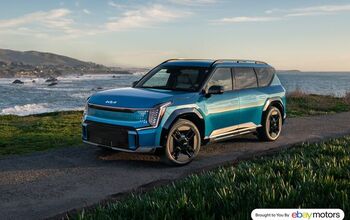
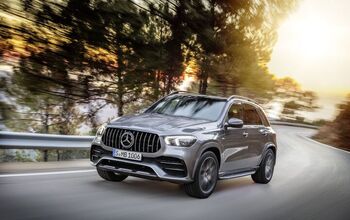
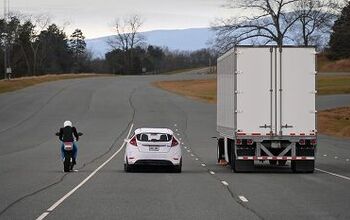

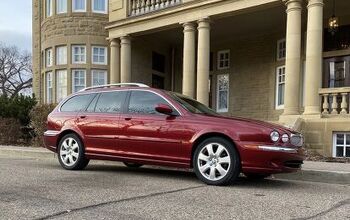
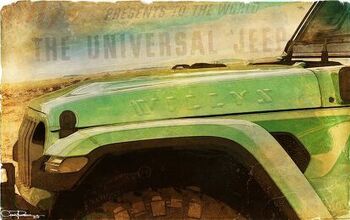
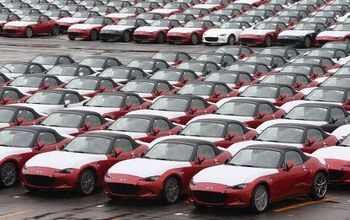
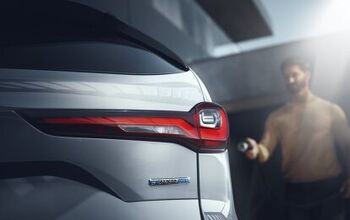

Comments
Join the conversation
Although I admire the looks of the car, at least in print, I saw one coming towards me today in the opposing lane, and the Buick LaCrosse is just too damned tall. It's like the original planners laid out the body for a crossover, but halfway through the design process a group of designers was brought in to clean things up and turn it into a sedan. That high hood just does not work. It's too bad, because Buick seems (seemed?) to be on the right track.
With New GM comes New Problems: their newest efforts are almost always gorgeous inside and out, but also, to a model, are massively overweight, with poor visibility, and build quality isn't on the same level as the ambitious designs. Perhaps more distressing is that GM has and will continue to handicap models of one division so that they won't tread on the toes of another. The only thing keeping Chevy from having a decent Impala is Buick, for instance; while the only thing keeping Buick from having a decent range-topper is, obviously, Cadillac (which doesn't have a range-topper either...yet)